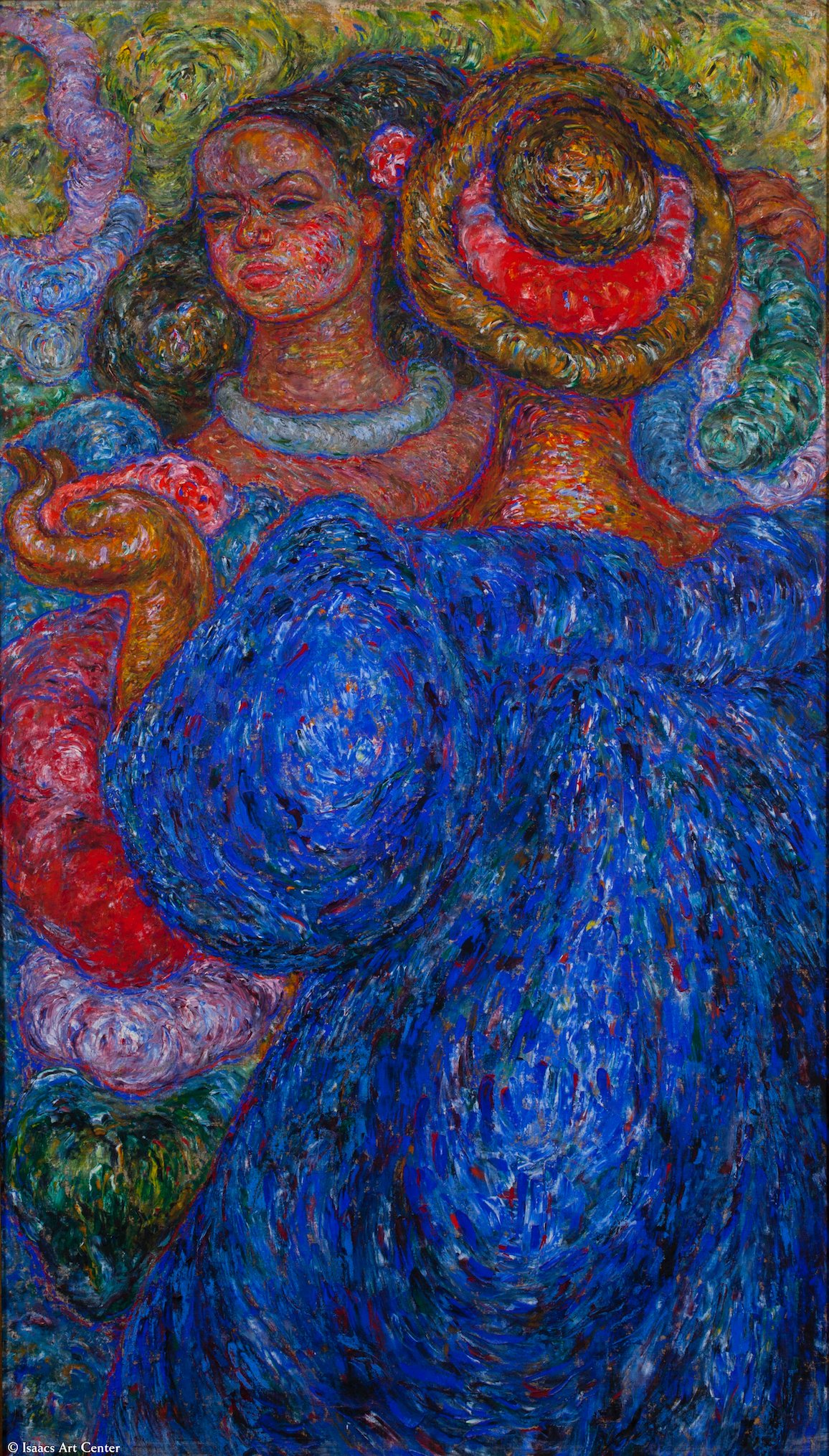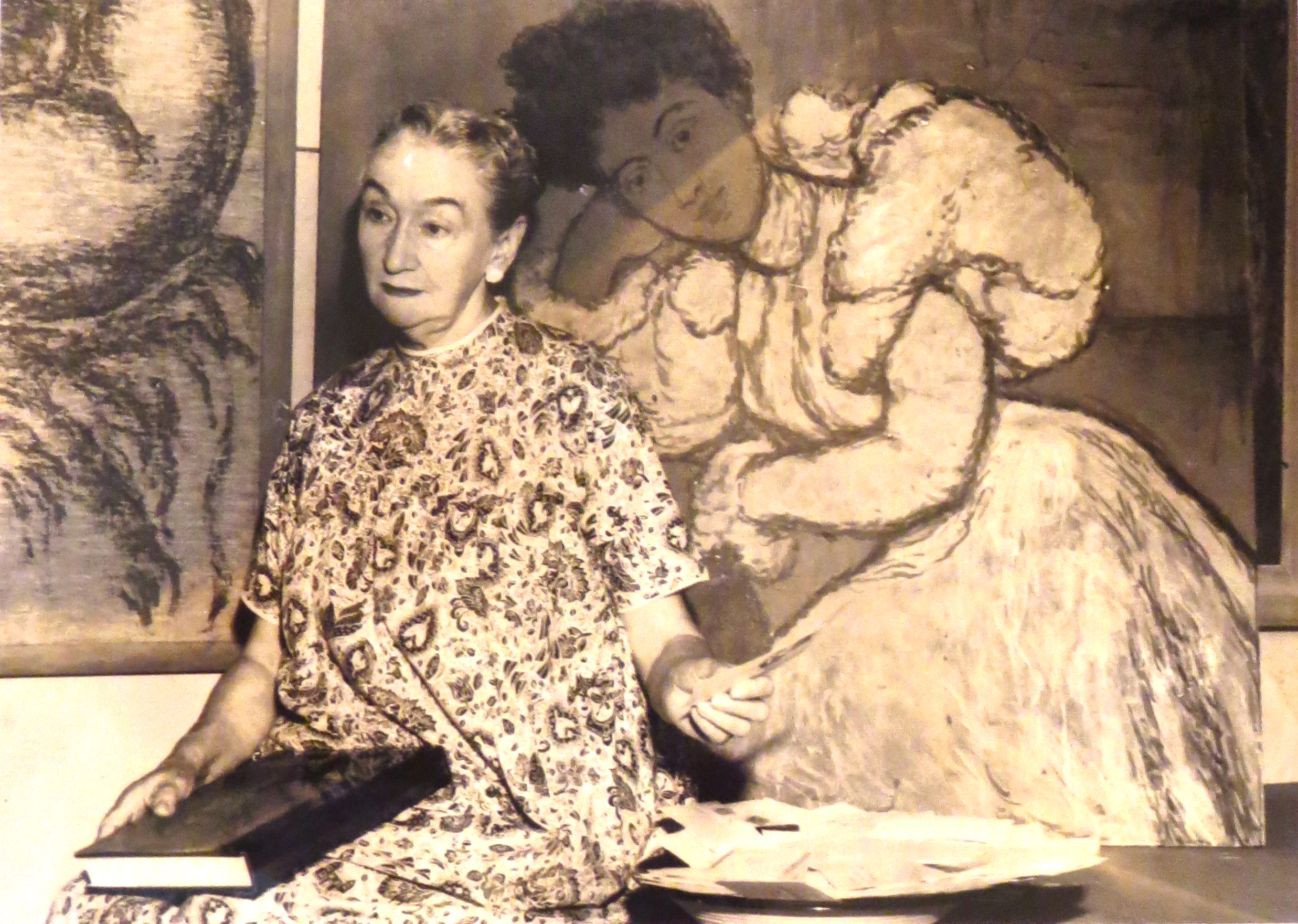Only a set of eyes remains still, as Madge Tennent animates the composition with undulating shapes, rhythmic contours, and abstracted floral motifs. Modeled with thick, painterly swirls of tropical colors, the life-sized Hawaiian ladies of Local Color mark the apex of an aesthetic evolution that was, in the artist’s own words, ‘stimulated by the pure color flourishes of van Gogh, the fire and ice of Cézanne, and the opalescent, jeweled, flower-tinted harmonies of Renoir’. Engaged in conversation and swathed in voluminous muumuus (enveloping dresses imposed by Western missionaries), these monumental, curvaceous matriarchs characterize Tennent’s signature subjects and style. Perhaps the most pioneering and prolific artist ever to have worked in Hawai’i, Tennent (1889-1972) transformed the world’s vision of the islands. Born in London and raised in Cape Town, Tennent was invited as a young girl to join the Parisian atelier of renowned artist-educator William-Adolphe Bouguereau. While she honed her technical mastery in the studio, weekend forays into the city’s thriving avant-garde scene provided an equally invaluable education. In 1915, she married banker Hugh Cowper Tennent and followed him first to his native New Zealand and then to British Samoa; there, her fascination with Polynesians erupted into a vocational calling. En route to London in 1923, the Tennent family stopped in Honolulu and, enamored of the paradisiacal metropolis, decided to stay. The ‘golden people’ of Hawai’i soon set Tennent’s imagination ablaze, and she set out on what was to become a 50-year quest to capture their dynamic forms and inherent nobility. Breaking with tradition and transcending the islands’ scenic allure, she conjured up the beauty of Hawai’i through the prism of its native inhabitants. This bold departure shocked Honolulu’s conservative art community but delighted audiences around the world, who lavished critical and popular acclaim on Tennent’s iconic Hawaiians Hanging Holoku. Like Velázquez, Vermeer, and Gauguin before her, Tennent became ‘one of those rare artists so identified with a locale and its way of life that the two cannot be pulled apart’. Local Color was selected by a jury to represent Hawai’i at the 1939 New York World’s Fair, where it was admired by millions of visitors. Nearly 50 years later, the painting returned to the East Coast to appear in the inaugural exhibition of Washington, D.C.’s National Museum of Women in the Arts (1987). It now hangs amid the world’s largest Madge Tennent collection, at the Isaacs Art Center in Kamuela, Hawai’i, which will unveil a sweeping retrospective of her legacy on 9 September.
Justin Sandulli


 Madge Tennent
Madge Tennent